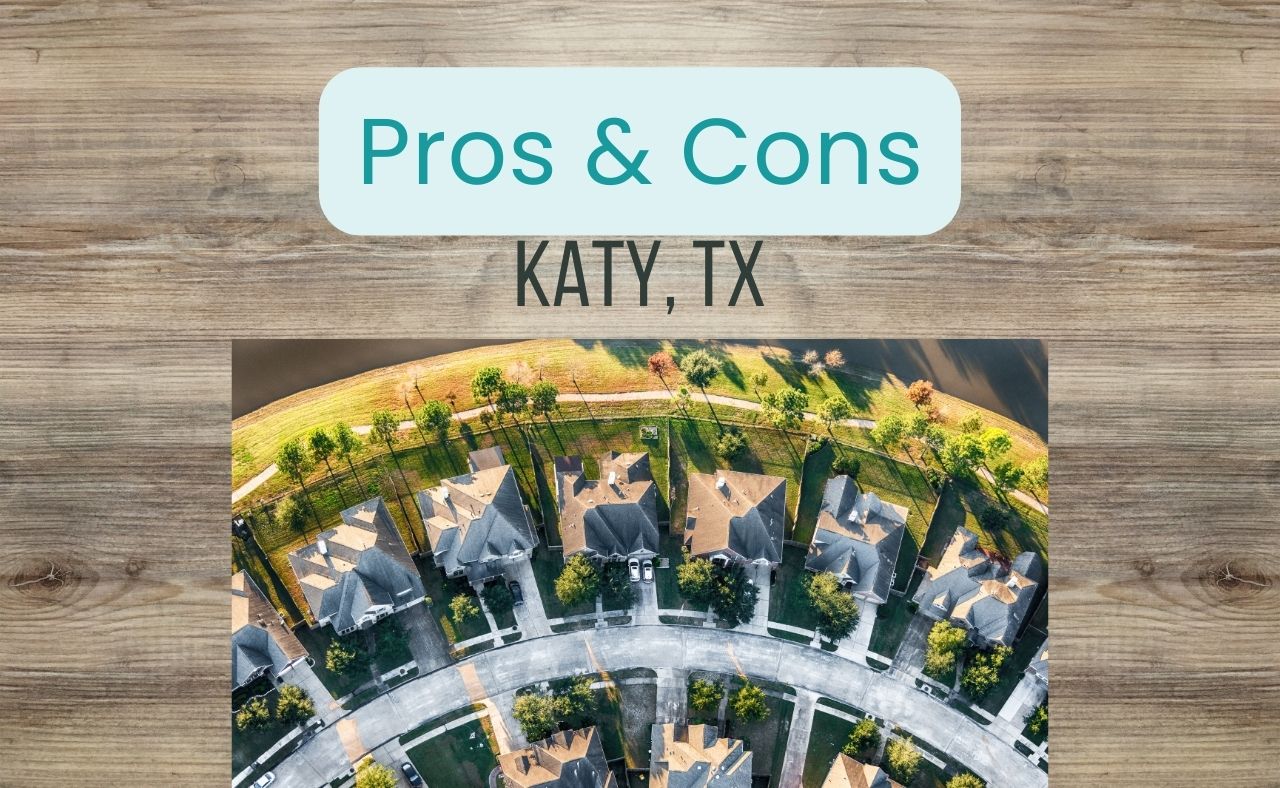Are you thinking of moving to Katy, TX? If you’re thinking about making Katy, Texas, your home, there are important factors to consider. Katy, a suburb just west of Houston, is a popular Houston suburb. In this article, we’ll break down the pros and cons of living in Katy, Texas.
Pros of Living in Katy, Texas
1. Top-Rated Schools
One of Katy’s biggest draws is its exceptional public school system. The Katy Independent School District (KISD) is highly rated, earning a #1 rank from Niche.com for the best school district in the Houston area.
2. Lots of Shopping and Dining
You don’t have to drive far for shopping and dining. Katy is home to LaCenterra at Cinco Ranch which is a bustling shopping center and community hub. With a variety of shops, restaurants, and cafes, it is a central gathering place for residents.
Additionally, the city boasts several other shopping centers and grocery stores, ensuring you have easy access to your everyday needs.
3. Close to Entertainment
You won’t get bored living in Katy. It is home to Katy Mills Mall. Katy Mills Mall, a sprawling indoor shopping center with over 100 stores, restaurants, food courts, and movie theaters, is a paradise for shoppers and entertainment seekers. Whether you’re in the mood for a shopping spree or catching the latest blockbuster, Katy Mills Mall has something for everyone.
Adjacent to Katy Mills Mall is the 25-acre Typhoon Texas Water Park, providing families with a fun escape from the Texas heat. This combination of shopping and entertainment options ensures that boredom is a rare occurrence in Katy, making it an attractive place for individuals and families alike.
4. Affordable Home Prices
Compared to housing costs in other Houston suburbs, Katy offers relatively affordable home prices. Affordability is another advantage of Katy, with a median home sale price of $369,015.
Katy offers a diverse range of housing options, with eight master-planned neighborhoods, each equipped with family-friendly amenities such as parks, pools, and fitness centers. One notable development, Sunterra, promises resort-like living, featuring a lagoon with a white sand beach and a lazy river.
5. No State Income Tax
One significant financial advantage of living in Katy, Texas, is the absence of a state income tax.
6. Convenient Location
Located just 29 miles or approximately a 44-minute drive west of downtown Houston, Katy is conveniently located near Houston. You can enjoy the benefits of city life while living in the peaceful suburbs of Houston.
Cons of Living in Katy, Texas
1. Property Taxes
Texas doesn’t have a state income tax, but it compensates with relatively high property taxes. This can be a drawback for homeowners, although it’s balanced by no state income tax.
2. Traffic Congestion
Like many growing suburbs, Katy experiences traffic congestion during rush hours. The Katy Freeway (I-10) is notorious for its traffic jams, which can be frustrating for commuters heading into Houston.
3. Limited Public Transportation
You need a car to get around Katy and to commute to Houston. Katy’s public transportation system is less developed compared to Houston’s. If you rely on public transit for your daily commute, you may find limited options in Katy.
4. Lack of Walkability
Katy’s suburban layout typically requires residents to rely on cars for most errands and activities. If you prefer a more walkable urban environment, Katy may not be the best fit.
5. Hot Summers
Texas is known for its extreme weather, including hot and humid summers. Summers can get uncomfortably hot!
6. Hurricane Risk
Being near the Gulf of Mexico, Katy is susceptible to hurricanes and tropical storms. While the area is well-prepared for such events, it’s essential for residents to be aware of the potential risks and take precautions.

